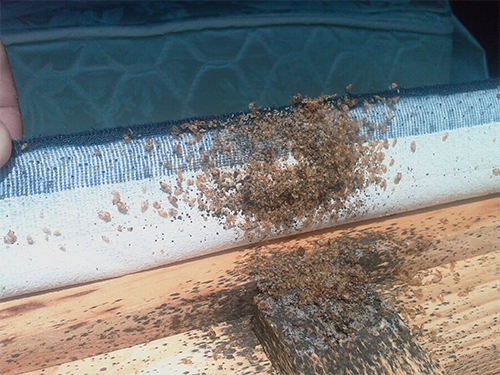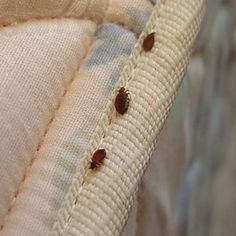Understanding the Lifecycle of Pests for Targeted Control Methods
Recognizing the lifecycle of insects is a fundamental facet of reliable parasite monitoring approaches. By understanding the different stages of development that pests go through, an extra targeted and precise technique can be taken on to control their populations. This understanding not only drops light on the vulnerabilities within the insect lifecycle yet also leads the way for implementing critical measures that can disrupt their growth and reproduction cycles. With a deeper understanding of how pests evolve and grow, customized control methods can be designed to resolve certain points in their lifecycle, inevitably resulting in even more successful parasite administration outcomes.
Relevance of Understanding Bug Lifecycle
Comprehending the lifecycle of parasites is vital for developing efficient and targeted control approaches in bug management. By understanding the numerous stages a bug goes via from egg to adult, insect control experts can recognize vulnerable factors in the lifecycle where treatment can be most successful.
Additionally, recognizing the details environmental problems necessary for each and every stage of the bug's lifecycle can assist choices on habitat alteration or exemption approaches to interfere with the lifecycle and lower bug populaces. This understanding enables pest monitoring experts to execute proactive measures instead than depending solely on reactive therapies, causing even more long-lasting and sustainable bug control services. Ultimately, a detailed understanding of bug lifecycles empowers bug control experts to customize their techniques effectively, lessening environmental influences and making the most of control end results.
Key Phases in Insect Growth
To effectively execute targeted control methods in bug monitoring, a crucial aspect exists in adequately recognizing and recognizing the vital phases in parasite growth. Parasite growth typically is composed of numerous crucial phases that are important for their lifecycle and administration.

Vulnerabilities in Bug Lifecycle
Throughout the various phases of a pest's lifecycle, unique susceptabilities emerge that can be purposefully targeted for effective control procedures. One vital vulnerability exists in the egg stage, where bugs are often a lot more at risk to certain pesticides or organic control agents because of their soft external shell, making them much easier targets for treatment. Additionally, the larval or nymph phase presents vulnerabilities as parasites undergo fast development and advancement, calling for high energy intake that can be exploited by interrupting their food sources or presenting development preventions. Pupal stages, identified by immobility and transformation, use additional info a window for targeted control through physical barriers or certain treatments that impede effective development. Grown-up pests, while a lot more resistant due to their reproductive capability, can still be vulnerable during mating or egg-laying tasks, which can be interrupted via scent catches or sterilization methods. Recognizing these vulnerabilities in the insect lifecycle is crucial for establishing efficient and accurate control methods that properly manage insect populations while lessening ecological effect.
Applying Targeted Control Procedures

Carrying out targeted control steps commonly entails a multi-faceted approach. This might consist of habitat alteration to make Learn More the environment less welcoming to insects, such as eliminating standing water for insect control or sealing access factors for rodents. Additionally, biological control techniques can be made use of, where all-natural killers or pathogens are presented to maintain insect populations in check.
Integrated Insect Management (IPM) approaches that incorporate different control procedures in a coordinated and lasting fashion are usually the most reliable in achieving lasting bug management goals. By carrying out targeted control procedures based on an extensive understanding of parasite lifecycles, parasite populations can be efficiently managed while minimizing risks to human health and wellness and the atmosphere.
Improved Parasite Administration Practices

In addition, the incorporation of organic control representatives, such as natural killers or microorganisms of parasites, can help in reducing dependence on chemical pesticides and promote an extra well balanced ecological community. Executing physical obstacles and traps can likewise belong to enhanced pest monitoring techniques, using non-toxic and targeted remedies for bug control. Additionally, using scents and other semiochemicals can interfere with pest mating patterns and interaction, causing decreased parasite populaces over time.
Final Thought
By identifying vital stages in parasite advancement and susceptabilities in their lifecycle, targeted control steps this link can be implemented to reduce pest populaces. Enhanced bug administration methods can help minimize the dependence on broad-spectrum pesticides and promote even more sustainable and environmentally friendly bug control approaches.
Comprehending the lifecycle of parasites is important for developing effective and targeted control methods in parasite administration. By understanding the various phases a pest goes via from egg to grownup, bug control specialists can identify vulnerable factors in the lifecycle where intervention can be most effective. Eventually, a comprehensive understanding of pest lifecycles encourages pest control professionals to customize their approaches effectively, taking full advantage of and minimizing environmental impacts control outcomes.
By executing targeted control measures based on a comprehensive understanding of parasite lifecycles, pest populations can be efficiently regulated while decreasing threats to human health and the setting.
By identifying vital phases in bug advancement and vulnerabilities in their lifecycle, targeted control procedures can be executed to lessen parasite populaces.